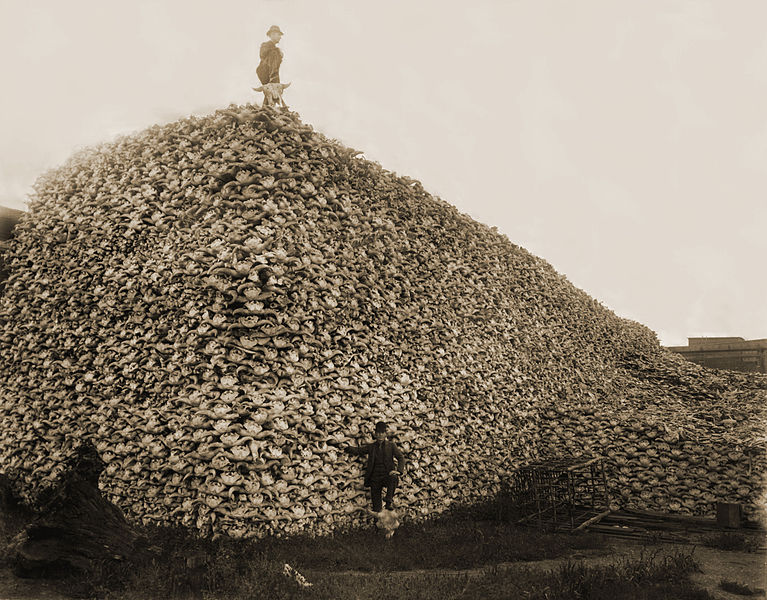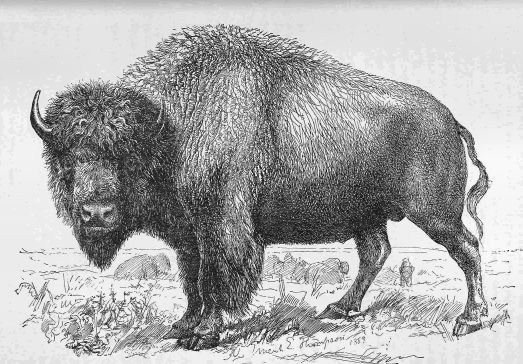M. Scott Taylor, in a forthcoming article in the American Economic Review, provides important evidence about the driving force behind the rapid killing of bison on the Great Plains between 1870 and 1883. Taylor’s explanation of the rapid expansion of foreign demand for hides because of technological innovations in tanning is convincing.
Taylor uses his empirical evidence, however, to draw incorrect conclusions about the role of property rights, or the lack thereof, in the slaughter of the bison. In his introduction he states, “The theory shows how the combination of an innovation in tanning, fixed world prices for hides, and open access proved fatal to the buffalo.” And in his conclusion he even draws lessons for developing countries when he argues:
The Slaughter on the Plains tells us that putting development before environmental protection can be a risky proposition: in just a few short years, international markets and demand from high income countries can destroy resources that otherwise would have taken decades to deplete.
The crucial question is the role of property rights in the near-extermination of the bison. He falls into the trap of many economists who think that the killing of most of the bison is a good example of the tragedy of the commons, or more accurately, the tragedy of an open-access resource. This argument depends importantly on what would have happened to the bison if the hide market had not existed.
The research that I have done has a very different implication (which Terry Anderson and I discuss in our book The Not so Wild, Wild West). While the demand for hides did speed up the process, something that Taylor acknowledges, the killing off of most of the bison was not because of the open access nature of the property rights institutions. In fact, a strong case can be made that, even if settlers would have been able to establish clearly enforceable property rights to bison, they would have eliminated most of them anyway. This conclusion is driven by the fact that, as the West became settled, grass was the main Great Plains resource that was valuable. And, those who had property rights to the grass needed a way to convert it into a marketable product. Bison were efficient convertors of grass to meat, but the costs of marketing that meat was extremely high. Cattle were a much better alternative.
I have estimated that in 1870 it cost approximately 30 cents per ton-mile to deliver bison meat to a railhead, while the comparable cost for cattle was 1.67 cents. The significant factor in the price difference was the relative ease of trailing cattle long distances quite easily; bison cannot. Ten cowboys could trail 3000 head of cattle. Ten cowboys could hardly herd ten bison to a common point.

Without the hide hunters it is not clear what the mechanism for removing the bison would have been, but the 10 million that existed in 1870 were doomed because of the economics of meat production. Thus hide hunting may have speeded the process up, but the fact that it occurred rapidly is not a “tragedy” in the sense of the economic waste that such statements usually imply. In fact, because hides were valuable meant that at least some economic gain existed from the slaughter of the bison. In the absence of the hide market, bison would, in all likelihood, simply been killed and left to rot.
The other interesting aspect of Taylor’s argument is his recognition that entrepreneurs were important in saving bison. Although the population dwindled to about 1000 head, today there are over 500,000 in the U.S. and Canada. It is true that, as bison numbers declined certain individuals perceived the importance of saving some of the species. It would appear, however, that they were not motivated by the prospect of marketing bison meat, but rather by the amenity value of the species. We can be grateful for a few ranchers with enough entrepreneurial vision to preserve some of the species, but there is no evidence that they thought bison meat was valuable enough to cover the much higher costs of production and market compared to cattle.
Of course the advent of the tractor-trailer for hauling bison in the 1930s lowered the cost of getting the meat to market, and there has developed a niche market to support a few bison herds in the U.S.
We should be grateful for Taylor’s work in providing a more complete understanding of the evolution of the hide market, which did speed up the killing of the bison. But one should not see that slaughter as an example of the tragedy of an open-access resource.
For more, see P.J. Hill’s article “Are All Commons Tragedies? The Case of Bison in the Nineteenth Century” in The Independent Review.



